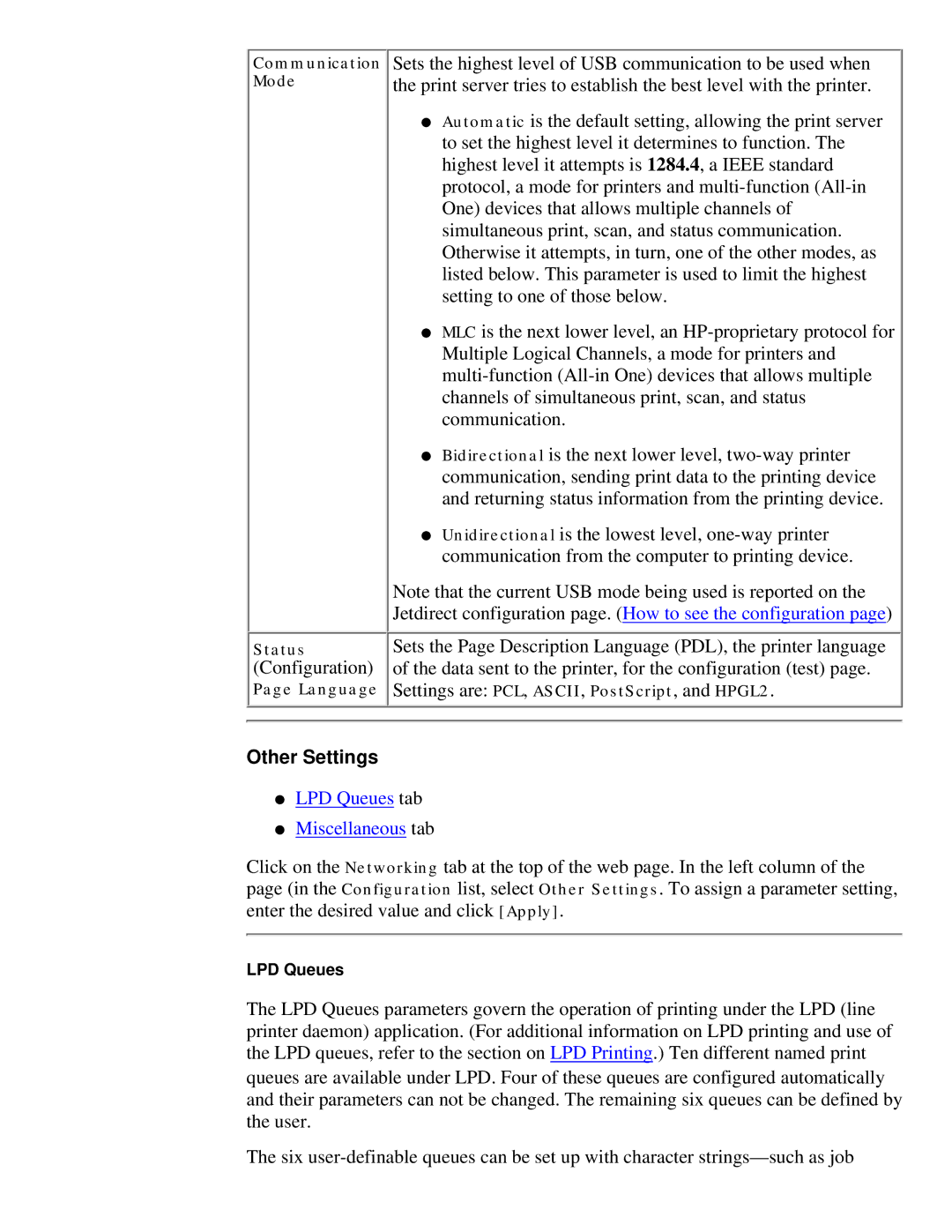
Communication | Sets the highest level of USB communication to be used when |
Mode | the print server tries to establish the best level with the printer. |
| ● Automatic is the default setting, allowing the print server |
| to set the highest level it determines to function. The |
| highest level it attempts is 1284.4, a IEEE standard |
| protocol, a mode for printers and |
| One) devices that allows multiple channels of |
| simultaneous print, scan, and status communication. |
| Otherwise it attempts, in turn, one of the other modes, as |
| listed below. This parameter is used to limit the highest |
| setting to one of those below. |
| ● MLC is the next lower level, an |
| Multiple Logical Channels, a mode for printers and |
| |
| channels of simultaneous print, scan, and status |
| communication. |
| ● Bidirectional is the next lower level, |
| communication, sending print data to the printing device |
| and returning status information from the printing device. |
| ● Unidirectional is the lowest level, |
| communication from the computer to printing device. |
| Note that the current USB mode being used is reported on the |
| Jetdirect configuration page. (How to see the configuration page) |
Status | Sets the Page Description Language (PDL), the printer language |
(Configuration) | of the data sent to the printer, for the configuration (test) page. |
Page Language | Settings are: PCL, ASCII, PostScript, and HPGL2. |
Other Settings
●LPD Queues tab
●Miscellaneous tab
Click on the Networking tab at the top of the web page. In the left column of the page (in the Configuration list, select Other Settings. To assign a parameter setting, enter the desired value and click [Apply].
LPD Queues
The LPD Queues parameters govern the operation of printing under the LPD (line printer daemon) application. (For additional information on LPD printing and use of the LPD queues, refer to the section on LPD Printing.) Ten different named print queues are available under LPD. Four of these queues are configured automatically and their parameters can not be changed. The remaining six queues can be defined by the user.
The six
